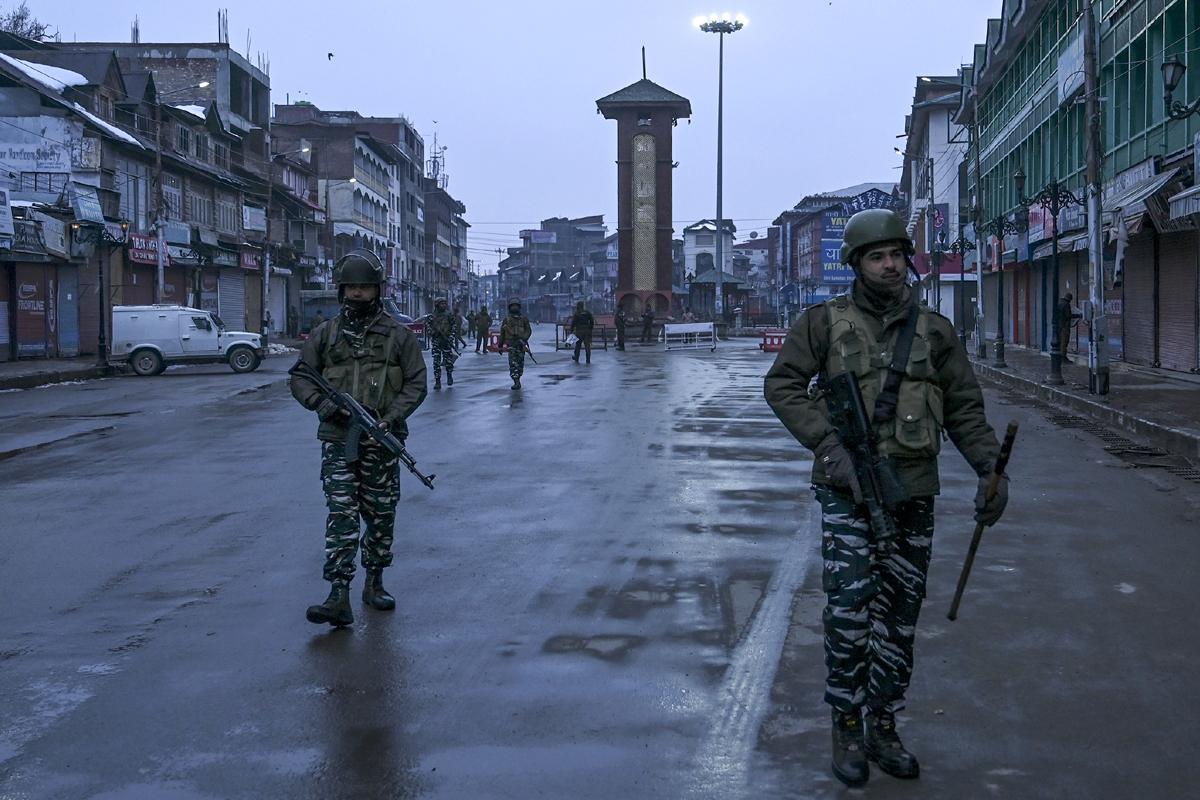Nadda accuses BJD of importing outsider for Odisha’s leadership
People have to remain cautious as BJD thinks there are no leaders in Odisha. The manner in which outsiders are being patronized by Naveen Patnaik, is a matter of grave concern, he said.
Removing unfairness with the Jammu region by appointing delimitation commission was one of the main planks of the Modi led BJP government at the centre.

Representational Image (Tauseef MUSTAFA / AFP)
Longstanding “bias” with the Jammu division in the allocation of assembly seats by successive Kashmir-dominated governments is expected to be removed with the centre initiating the move to set up delimitation commission to redraw boundaries of assembly constituencies in Jammu and Kashmir.
Removing unfairness with the Jammu region by appointing delimitation commission was one of the main planks of the Modi led BJP government at the centre.
The Union Home Ministry has initiated the process to establish the commission to demarcate 90 assembly seats against the 87 seats that the assembly had prior to abrogation of the Article 370 and bifurcation of the state into two union territories (UTs). Four of these seats were from Ladakh that has been declared a separate UT without assembly.
Advertisement
The Election Commission has nominated election commissioner Sushil Chandra on the 3-member commission while other nominations are still awaited. The commission will be chaired by a serving or retired Supreme Court judge. It is learnt that the Centre has begun shortlisting names and will notify the Delimitation Commission soon.
It is expected that the next elections in J&K would only be held after the delimitation process is complete – redrawing boundaries and size of constituencies – on the basis of the 2011 census.
Section 60 of the Jammu and Kashmir Reorganisation Act provides that the number of seats would be increased to 114 from the existing 107. Twenty-four seats in the assembly are reserved for the Pakistan-occupied Jammu & Kashmir (POJK) and these benches remain vacant in the house. The Reorganisation Act has increased 7 seats in the assembly and at the same time scraped the 36 member Legislative Assembly (Upper House).
Complaints were raised from time to time that despite being a bigger geographical area and also discrepancies in actual figures of population, the Jammu region was allocated only 37 assembly seats against 46 of Kashmir valley. Ladakh had 4 assembly seats. This dominant figure of Kashmir was an obstacle in getting a chief minister elected from the Jammu division.
It has been pointed out several times that many assembly seats in the Jammu division had far more number of the electorate than that in the Kashmir valley in a bid to deprive Jammu of its due.
The last delimitation was done in 1995-96 and a fresh one was frozen till 2026.
Similarly, Jammu has only two Lok Sabha seats whereas the Kashmir valley had four constituencies. However, with Ladakh getting delinked from Kashmir after being made a separate UT, the valley is left with 3 Lok Sabha seats. The four Rajya Sabha seats will be retained by the UT of J&K.
Unlike other states of the country, the term of the assembly in Jammu and Kashmir was six years against five years elsewhere. It is expected that the term of the new assembly after the elections would be fixed at five years.
Advertisement